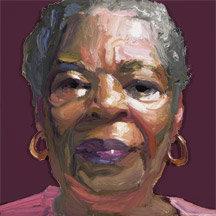Akron Art Museum’s Ray Turner exhibit featuring local residents
March 2012 | By: Roger Durbin
 DOWNTOWN AKRON — The latest exhibit at the Akron Art Museum — Ray Turner: Population — is part of a 10-year project by the artist to capture faces from around America.
DOWNTOWN AKRON — The latest exhibit at the Akron Art Museum — Ray Turner: Population — is part of a 10-year project by the artist to capture faces from around America.
The exhibit, which is on view through May 27, features a pictorial celebration of both the marginalized in our society and its unsung heroes.
Including the 23 portraits of Akron area residents in this showing, the exhibit comprises 190 paintings from Turner’s Population series along with nine works from the Monroe series (which are images of the artist’s son) and four works from his Good Man/Bad Man series (which are imaginary portraits that capture the essence of individuals abstractly and subjectively while aimed at essential moral qualities).
On opening night of the exhibit, March 2, the focus was clearly on the Akron residents represented. Turner came to Akron this past September and photographed 23 preselected personalities from the University Park area who either live there or have made a difference in the community. Then he went back to his native California home and painted in oil onto clear glass from the photos and memory. In a speech given during the opening, Turner acknowledged he got to know the people he photographed as a guide for representing them when he painted them for the exhibit.
All the images of Akron folks are gathered in the central of five rows of photographic busts on glass represented in the installation. As Turner moves from city to city creating an ever-increasing number of photos, it is likely the host city will have the central spot in the display.
The process of the installation is as interesting as the end result. Turner forwarded a color array (beginning with lighter shades and hues on the outside and darker toward the center). The museum staff then had to paint the various shades in 12-inch squares on the wall awaiting the arrival of the clear glass images. They were then mounted over the painted areas.
That’s a lot of work, as Turner acknowledged. Even more problematic were two additional concerns — all the 190 paintings didn’t fit well on one wall, nor did two of them arrive with the rest. The museum staff, according to Arnold Tunstall, collections manager, resolved the first issue by wrapping the images onto an adjacent wall, which probably helped to shape and give scale and form to the exhibit. For the missing portraits (they were scheduled to arrive within two days), preparatory created lists of Akron “unsung heroes” and placed them strategically at the end of the “Akron row” to create necessary balance for the display. Very ingeniously done.
Normally, Turner doesn’t like his subjects to be identified. Since the idea of this project is to present the “sea of humanity” as he terms it, the maintenance of anonymity gives a kind of overall “integrity” to the core idea of representational images that could be any of us.
In his speech at the opening, Turner commented he is more interested in the paint itself than the likeness. What he is getting at is his concern for the essence or core of the subject he is painting. His brushstrokes are strong; colors and layers of paint range from thin and muted (and indeed at times the glass itself shows through) to strong and roughly textured. The combinations of treatment create the sense of personality as opposed to simple likeness. Look at some and you can see his sense of the intelligence of the individual, while in another you get a sense of the person’s generous spirit. These are the things the artist works for and what the viewer can concentrate on beyond the sheer number of faces represented in the display.
The other pieces in the exhibit (the Monroe series and the Good Man/Bad Man one) give Turner the freedom to explore levels of the subject’s humanity. Abstract and highly subjective, the paintings beg for interpretation and an appreciation of the artistic nuance that Turner applies.